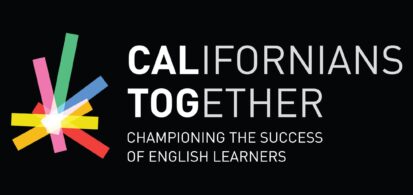Newcomer is a term typically used to describe students who recently arrived in U.S. schools–but what recently means is not uniformly agreed upon. A new report from PACE, written by Californians Together Director of Newcomer Policy and Practice Sam Finn, highlights this as a fundamental challenge for policymakers and school leaders in supporting newcomer students.
Districts Struggle to Educate Newcomers and Seek Support in Developing Effective Instructional Models
Terminology matters–and so does data. A lack of standardized terms contributes to a lack of data on these students. Newcomers are absent from publicly available state data and accountability systems. This means that the public, policymakers, community organizations, and those closest to students, cannot answer critical questions about how schools are serving the unique needs of newcomers. While newcomers do share some characteristics with the broader English learner population, it would be incorrect to lump their data together – but that’s exactly what is happening. Doing so obscures the specific challenges these students, who often experience interrupted education experiences and endure significant trauma, face when they arrive at school.
Lack of Data Makes it Challenging for Newcomers to Be Seen By Practitioners, Policymakers, Researchers, and Publishers
Fast facts about newcomers. A special data request to the California Department of Education enabled Sam to analyze 2020-2021 Title III, the only district-level data available for newcomers in California, data. Here are key findings:
- 1 in 40 California students is a newcomer
- 1 in 8 English learners is a newcomer
- More than half of the state’s newcomers are enrolled in school in five counties (Los Angeles, Orange, San Diego, Santa Clara, and Alameda)
- 67% of newcomers are considered socially disadvantaged
- While California’s broader English learner population primarily speaks Spanish (80%), less than half of newcomer students speak Spanish as their first language
This data is important for understanding the landscape of newcomer students in California, but more data is needed to answer questions about effective teaching and for providing appropriate wraparound services to this group of students.
Meeting Newcomers’ Basic Needs Requires Social Services from Partner Organizations
Additionally, partnerships between districts and community organizations, including faith-based organizations and local nonprofits, represent opportunities to connect students and families to the wraparound services they need to require challenging circumstances. The report raises Oakland Unified as an example of a district that developed and implemented a data system to gain a nuanced understanding of student needs. The report also highlights statewide programs, such as CalNEW that partner with school staff to deliver relevant services to newcomers and their families. Growing district capacity to use data to identify and sustain such partnerships is crucial for ensuring that these promising practices, and others, can be implemented to meet these critical needs.
For more promising practices and recommendations for state leaders, please read the full report. View the executive summary here.
